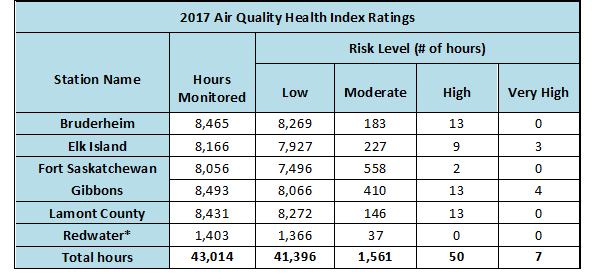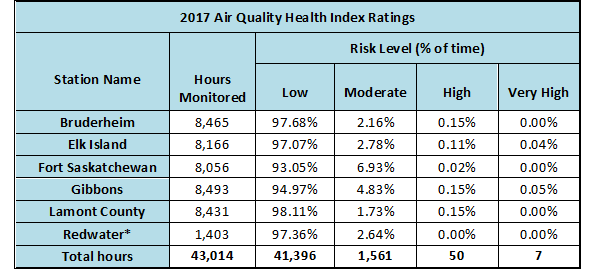Fort Air Partnership (FAP), the organization that monitors the air local residents breathe, released its 2017 regional air quality monitoring results today.
In 2017, FAP’s six stations that collect data used to calculate an hourly and forecast Air Quality Health Index (AQHI) in and around Alberta’s Industrial Heartland registered low risk readings the vast majority of the time. Lamont County had the highest annual percentage of low risk readings at 98% while Fort Saskatchewan had the lowest at 93%. Risk to health increases as the index level rises.
In total across the network, 43,014 hours of AQHI readings were recorded in 2017. Of that total, 57 hours (or less than 0.2% of total hours monitored) were in the high or very high risk AQHI category) These were due to forest fire smoke or winter temperature inversions. During a winter inversion, cold air along with pollutants is trapped near the ground by a layer of warm air. This is a weather condition that impacts large parts of the Edmonton Metropolitan Region whenever it occurs.
During 2017, there were 146 occasions across FAP’s nine monitoring stations where air quality measurements exceeded Alberta’s Ambient Air Quality Objectives. Two-thirds (67%) of these exceedances involved high concentrations of Respirable Particulate Matter (PM2.5). The PM2.5 exceedances were caused mainly by forest fire smoke and winter temperature inversions.
Five year trends of both AQHI and exceedances show fluctuations. This can be attributed to variances in annual seasonal events like forest fires, weather patterns and FAP’s transition over the last five years to a regional monitoring network that more accurately monitors air quality where people live.



